
Q&A With WDFW’s Smelt Biologist
Editor’s note: Lower Columbia managers will meet next Tuesday, January 26, to consider a “research-level” commercial smelt fishery, the now-standard practice that helps determine if this year’s run is strong enough to host a second straight winter of recreational dipping in the Cowlitz/
There are good signs – smelt are in the river, as well as sea lions and other predators – as a key driver, water temperature, is also much warmer earlier than normal, 42 versus 38.4 over the past five years.
In the meanwhile, here is an interview with WDFW’s eulachon biologist that appears in the February 2021 issue of Northwest Sportsman magazine.
Laura Heironimus tells our MD Johnson what we do and don’t know about the lifecycle of the oily little fish that in days gone by drew hordes to the banks of the Cowlitz and is now listed under ESA, the process for getting to consideration of a sport dipping season – and the extra wrinkle that Covid-19 has thrown into the mix this winter.
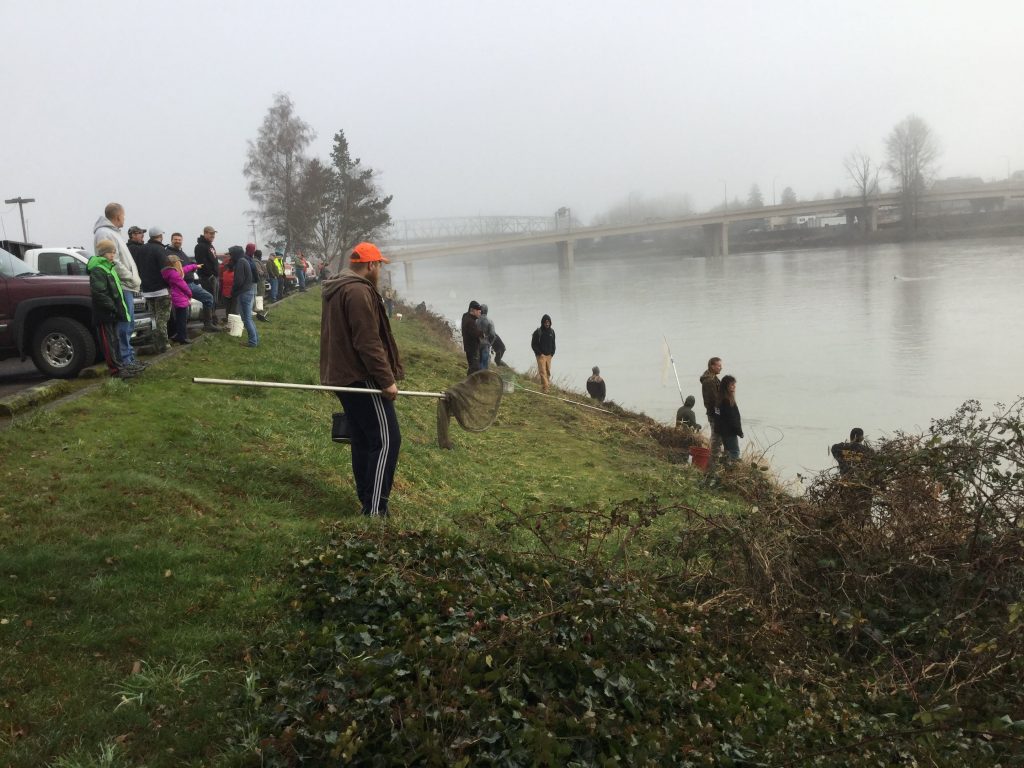
An eulachon opener this winter would be a hopeful sign for the little fish and a tradition that once drew hordes to the banks of the Cowlitz.
By M.D. Johnson
Some of you may have heard this already, but don’t try stopping me ’cause I’m going to say it regardless. Encore presentation for some, I reckon.
When I moved to Washington the first time in 1993, I instantly fell in love with two things, above and beyond my then-girl/now-wife Julia Carol. One was digging razor clams; the second was dipping smelt. Now remember, I’m from Ohio, where we have neither razor clams nor smelt. But we do have doves and dove hunting, which is a ridiculously social event. I’d go so far as to say carnival-esque, if it weren’t for the inclusion and frequent use of firearms. Carnivals and guns – well, they just don’t mix, I believe.
But that’s what I loved then and still love today about dipping smelt. Back in the day – around 1993, I reckon – we dipped our 10 pounds after dark, when the shoals of small silvery fish moved into shallower water closer to the bank. A lot of you smelt vets did likewise. Back then, it was lanterns, headlamps, flashlights and five-gallon buckets. Oh, and beer. Can I say that? If I can, I’m sure I’m not the only one who can remember the necessary equipment.
(Insert laugh track here.)
It was the social aspect of smelt dipping that was, and still is, the attraction. I don’t eat ’em, except maybe a handful of jalapeño-smoked smelt that the brother-in-law makes. I do use ’em for bait, but with keeper sturgeon seasons so hit and miss, there’s not much call for a metric ton of smelt. So I, like many, go for the carnival atmosphere.
Sometimes, yes, to Longview’s Carnival Market, a popular dipping spot along the town’s historic Westside Highway. I go to sit and watch and talk and get out of the house after 10 weeks of rain. Oh, yeah; I’ll occasionally get into the water and swat at a few of the little devils. Just enough to put in the freezer should, by some act of a kind God, we get a sturgeon retention season on the Lower Columbia below Wauna, where there might be a fish or two. Hey, if I’m wishing, I’m wishing big.
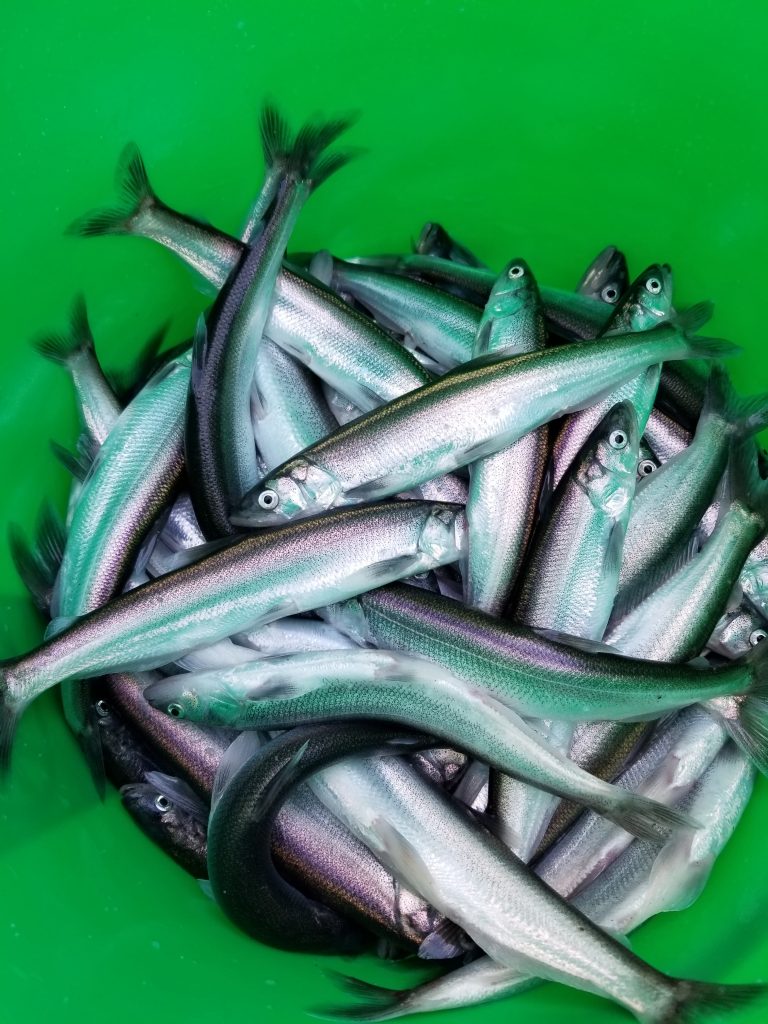
BUT AS SMELTERS know, the past two decades have presented a much different picture when the topic turns to the little fish. Smelt populations, biologists determined, began to decline in the mid-1990s, or about the time I left Washington for Iowa. In 2001, the Washington-Oregon Eulachon Management Plan was drafted; nine years later in 2010, Columbia River smelt were listed under the federal Endangered Species Act as a threatened population, a status they hold to the present day. Smelt dipping seasons have become spotty to nonexistent; no season, no season, no season, followed by half a day here and half a day there.
We had two mornings on the Cowlitz River in 2020, just before Covid-19 hit. The first, on Valentine’s Day, provided quick limits, while the second on Feb. 26 – well, it sucked.
Badly.
So, and that all behind us, what’s the status of Columbia River smelt populations, and, more importantly to some, what are the chances of a season this winter?
Northwest Sportsman was fortunate enough to catch the Washington Department of Fish and Wildlife’s smelt biologist at her desk in early January, and she was happy to share what information she had available at this point in time as to populations and possibilities.
Northwest Sportsman Introduce yourself and your role with the WDFW.
Laura Heironimus I’m Laura Heironimus, and I’m the WDFW’s sturgeon, smelt and lamprey unit lead. I started with the WDFW in January of 2018, and my role with smelt is to oversee the research, monitoring, harvest and policy for the species.
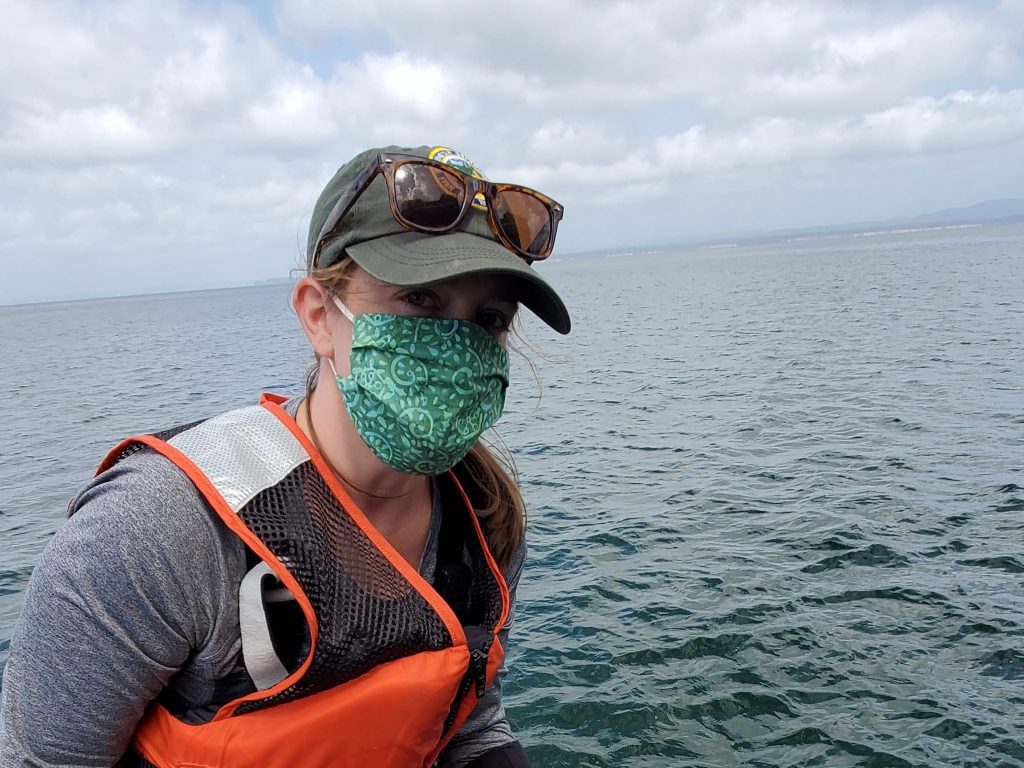
NWS So, how does one become the agency’s smelt person, per se?
LH I have a bachelor’s degree in Fisheries Science from Virginia Tech, and a master’s degree in Fisheries Science from South Dakota State University. Most of my background is working with sturgeon, and my master’s thesis was done on larval pallid sturgeon. I worked with the U.S. Fish and Wildlife Service in California studying white sturgeon habitat and spawning. I actually came up here (to Washington) to be a sturgeon biologist and they needed assistance with the smelt program, too. Smelt was a fairly new species to me when I came up, but I brought it in as one of the key species I work with.
NWS I’ve heard tell there’s actually little known about smelt – where they go, what they do, how it happens. Is that true?
LH Smelt are quite understudied in comparison to many other species in the Columbia Basin, especially when you look at our salmon species. We don’t really know where smelt go when they go out into the ocean. We have some ideas when they’re picked up during the pink shrimp fishery or some of the other offshore fisheries. But we largely don’t know what they’re doing out in the ocean. We’ve been trying for the past decade or longer to better understand their run dynamics, and what ocean conditions might be driving their population changes.
Our unit within WDFW is pretty small, and there’s only a handful of us who are really studying smelt. The Eulachon Technical Recovery and Implementation Team, which is a group of folks from state, federal and tribal agencies, only started in the fall of 2018, and we do struggle with funding to better understand smelt and make better decisions. But we want that understanding, so we help the population recover eventually.
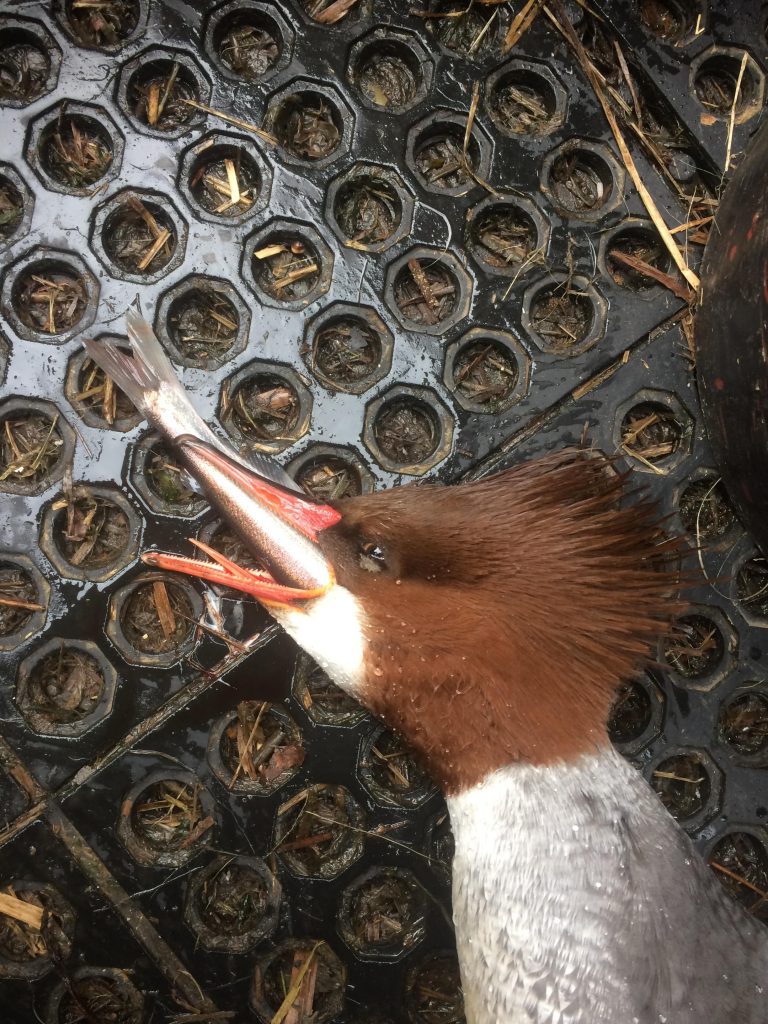
NWS In layperson’s terms, what goes into setting a smelt season?
LH There’s actually quite a lot that goes into that. First, we use the previous year’s information to compile a rough forecast for the coming year. But like I said, there’s not a lot known about smelt, so a forecast isn’t going to be spot on. We try hard, though, to predict based on ocean conditions, in-stream conditions, age classes from previous years. So, coming into 2021, we think there are going to be some strong age classes (of) 3- and 4-year-old smelt coming into the river. They’ve had some better ocean conditions in recent years, and they’ve made a showing last year. That’s the starting point.
This year with Covid, we have an extra layer. We’re working with county public health officials to determine if they’ll support a fishery with the pandemic concerns. This fishery tends to bring a lot of people out from a lot of different areas. Often, thousands if not tens of thousands of people will show up on a single day. So working with the public health officials will be very important this year.
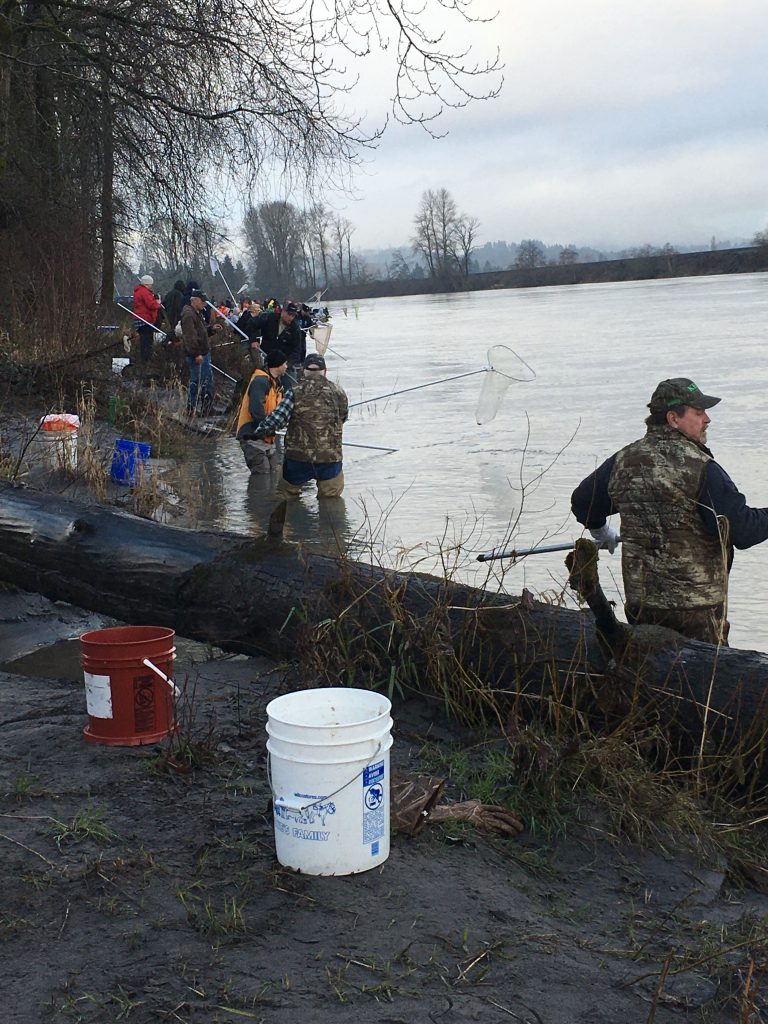
But back to season setting. The states of Washington and Oregon typically go to the National Oceanic and Atmospheric Administration each year to evaluate these forecasts, and what our sampling plan might be. We’ll try to get a feeling from NOAA as to where they’re at on having a (smelt) fishery. It is an ESA-listed stock, so we work with NOAA to determine their comfort level on setting these fisheries.
Meantime, they establish guidelines as to how much monitoring they’d like to have us do in order to evaluate what type of ESA impact might occur if we were to open any sort of fishing season. We also reach out to our tribal partners, as well as several different groups that currently monitor smelt populations.
In late January, there’s a “compact” hearing. That’s a public meeting between Washington and Oregon where we might set commercial mainstem fisheries on the Columbia River. The staff recommendation based on the forecast and conversations with NOAA is made to the decision-makers for both states. They will make the final decision as to whether or not there will be a commercial fishery, and what the dates and times for that fishery might be.
That fishery is very important to us in order to monitor our in-season run information. This commercial fishery is actually quite small, and harvests quite fewer smelt than the recreational fishery. With the commercial fishery, we can get a sense of how many adult smelt are in the river during this period, as well as collect fish for biological sampling. Male-to-female ratios. Age classes in that particular run. General size of the fish. Number of eggs in the females.
[Author’s note: The term is “fecundity,” meaning the number of eggs being readied by the female for the next spawning cycle. See! You learned something!]
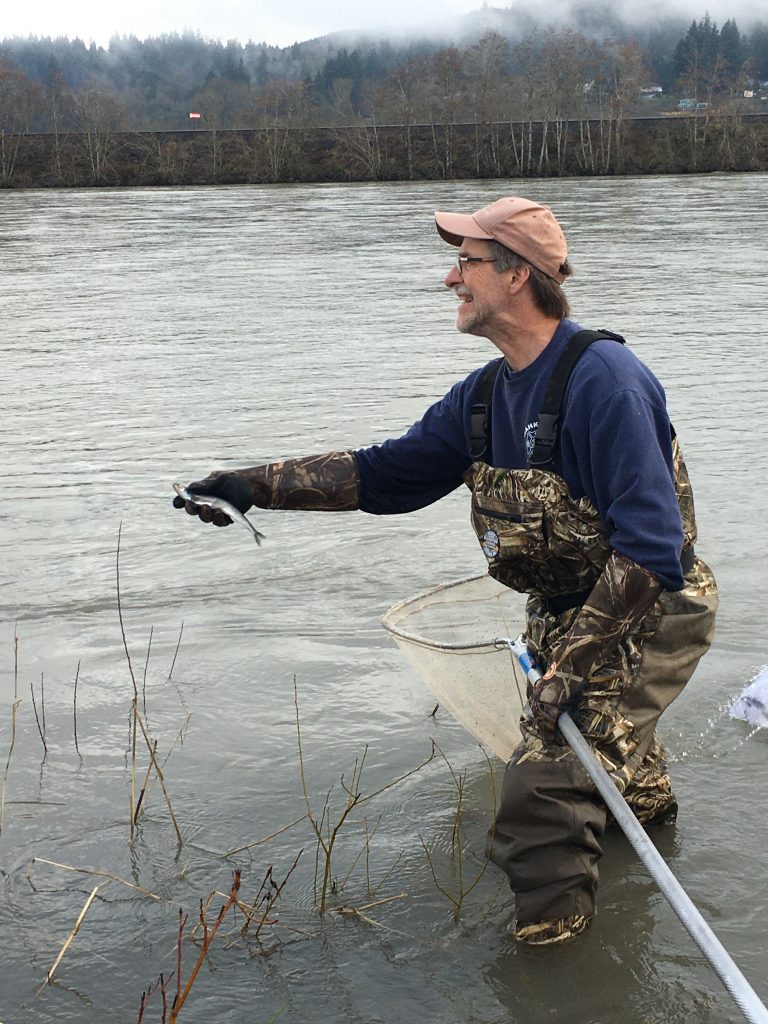
From this, we can determine (whether we believe) the run is strong enough to support a recreational fishery. In past years, we’ve tried to limit recreational harvest to something very conservative; less than 1 percent is the goal. In most years, we’ve landed between 1 and 5 percent.
Once we know we’re getting strong landings in the commercial fishery and there are fish in the Cowlitz River, there are still more steps. We have to make sure we have our sampling measures in place – samplers on the river counting people and determining effort. We have to have people out there to do biological sampling. But really the big thing is to evaluate effort – how many people show up, and how many fish are being caugh – so we can estimate total harvest for that fishery. We have to work with our (law) enforcement too. And finally, if we have fish in the (Cowlitz), we’ll work to get the word out to the public as much in advance as possible, but that might only be a few days.
NWS So, and that all said, how likely is it that we’ll see a smelt season in ’21?
LH I can’t answer that. There are already signs that there are fish in the river. We’ve had predators – seals and sea lions, and birds – out in different areas. We’ve had a lot of activity in the Grays River, and even in the mainstem up to Rainier. We know there are smelt in the river already. Water temperatures are pretty warm this year and may be driving them in a little early, but until we go through some of these steps and get approval to even have a fishery, I can’t say if a fishery is likely or not.
Last year, the fishery was held just before Covid came to the US. Then a month later, Covid shut us down. So we really haven’t been through the process with this fishery. It’s my understanding that we’re trying to make contact now with county health officials, and we’re working on that as one of the first steps.
NWS Words of advice for first-time dippers, Laura?
LH Even in the same area, the fishing can really vary from different points on the shore. And that has to do with the dynamics of water flow along the bank of the river, and how close the fish come in. It seems the people who have the most success have found a spot where these fish come in close.
If it’s your first time, I’d recommend walking around and seeing how other people are doing it. Where they’re having success and where they’re not. And then (kinda) waiting your turn to get in there because most of these people will fish and leave rather quickly when the fishing is good. Usually the turnover on dippers is pretty quick, so you can find a spot and just wait for people to finish up.
AT THIS WRITING on Jan. 14, it’s still unknown whether or not we’ll have a smelt season. Right now, there are a ton of seals in the Columbia, and I’ve been watching seals, cormorants and mergansers ball up in the Grays River for 10 days or more now.
Fingers crossed, I reckon.
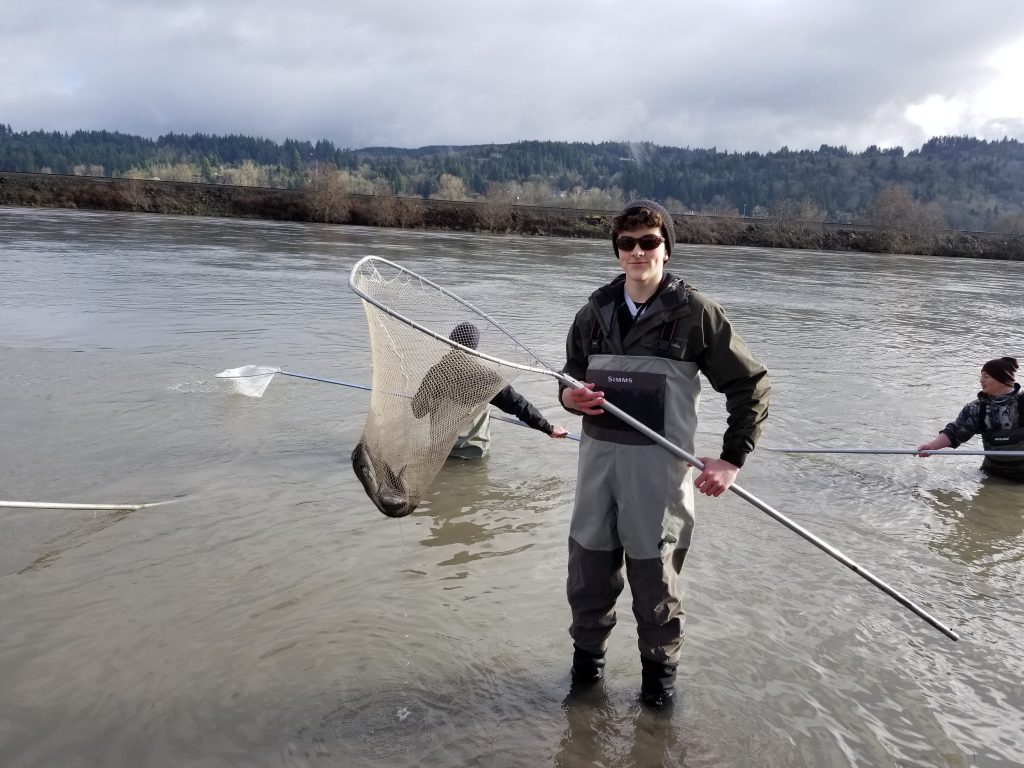
Correction: 1:41 p.m., January 22, 2021: The initial version of this story incorrectly identified where Laura Heironimus, WDFW’s sturgeon, smelt and lamprey unit lead, received her master’s degree in Fisheries Science. It was at South Dakota State University, not South Coast State University. Our apologies
